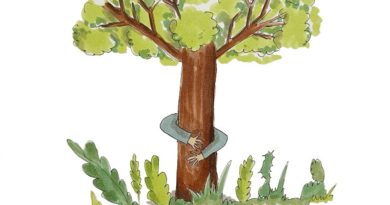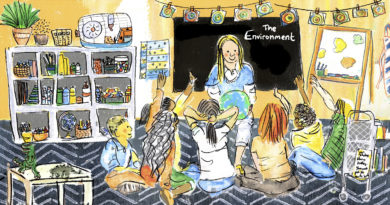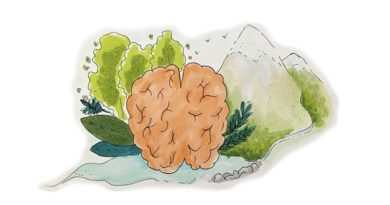Let the World Hear You! Public Speaking for Kids
It was a normal after-school afternoon, and I asked what the homework was as I usually do, not expecting anything more exciting than a bit of math and a bit of writing. My daughter is in second grade, and the most thrilling things they learn now are generally outside of the classroom: gardening, birdwatching, woodwork, sewing and sports.
But that day was different! She was to prepare a talk, giving a book review to the class. There were some requirements: name the book and author, characters, synopsis, read a segment, draw a poster about the book. The talk was to be given in German – GASP! The challenge became even more exciting – between my German as a third language focused on finance and her budding Swiss German, we had a mountain to climb!
In my opinion, it is never too early to start practicing public speaking. I am a seasoned presenter at conferences, corporate trainings and online platforms, but my skills and love of public speaking really started developing with first presentations in front of my class when I was her age or younger. That homework assignment was an extremely exciting opportunity for me to share my knowledge and for us to have a joint, serious project!
The instructions given by the teacher offered a great framework. What they didn’t give the kids is the HOW. How to structure your talk? How to remember what you wanted to say? How to get the attention of the audience? How to keep the attention? And how to finish with an impact?
We had a week to prepare. The result was so astonishing that the teacher sent me an email five minutes after the talk, saying that she could not believe how well my daughter did – that her talk was not a second grade level but rather fourth or above. The children couldn’t believe it either: they listened with opened mouths, clapped and cheered at the end.
So let me share with you what we did!
Brainstorming
First, you need to brainstorm and gather ideas: what is the main point of the talk? What do you want to say? What do you want to draw attention to? Write down all the ideas – you will sift through them and structure them later.
We read the book to be presented together and talked about main messages, messages that touched my daughter, and messages she wanted to bring forward.
Structure
Second, you need to structure your brainstorming session into a story line.
- There has to be a clear title and motivation. What are you going to talk about? In the corporate world this is normally two slides – Title and Agenda. In the kids’ world it’s pretty much the same: “I am going to talk about birds.” People want to know what they will hear; they need to prepare their minds.
- Even for a short talk there must be three main parts: introduce, expand, culminate. You introduce your topic or your book characters or your country etc, you then expand into the body of the talk – how long depends on the amount of time you have. Finally, you culminate the story – “and so they lived happily ever after” – appropriately, which can be a summary of how the story ends or how it will go on.
- There has to be an impactful conclusion. The conclusion can be either a personal interpretation, personal lessons learned, or a call to action – “Let’s use less plastic”; “I like this book because…”, etc.
Props
Third, and this is specifically for kids – be creative with props! In our example, a character liked cakes, so my daughter asked me to make mini cupcakes for the class, and she finished with, “Do you also like cakes like Hugo?” Think balloons, treasures, food, plants, toys!
Prepare cards
I made only five PowerPoint slides to cover the above to use as a practicing aid. It is important to have some type of cards, whether they are PowerPoint or handwritten.
The cards help the child to visualise the structure and the dynamics of the talk. The cards have to be short, so the child can clearly see the “map” of the talk. Use large font and ample space between lines.
Here is the text on our slides with my comments:
Agenda
“Today I would like to present a Book by Christina Ochnser. It’s called Hugo the Monster. it is about loneliness and friendship.”
This last sentence took us some time to distil. It had to be short and impactful; it’s like a subtitle for the talk, the motivation.
Introduction of characters and the setting:
“The main characters are Lisa and Hugo.
Lisa is a girl from the village.
Hugo’s a little monster. It has green stripes at the top and yellow and red stripes at the bottom.
The people of the village are afraid because they hear noise from the forest over and over again.”
We picked only three short sentences for the introduction. This can take some brainstorming, but it will make practice so much easier and clearer.
Expand:
“One day Lisa was on her way home and met Hugo.
She wasn’t afraid of him.
Hugo said he liked cake.
And Lisa brought a cake the next day!
That way they became friends!”
A challenge is to express as much of the story as possible on one card. This is fun to do as a family! How can you say this in one sentence without repeating the book? How can you describe the main traits of this bird without reciting the whole Wiki article? It teaches kids to grab the most important messages.
Culminate
“The people in the village think Hugo looks funny and has a funny friend.
Lisa explained that it doesn’t matter what you look like.
We can all be friends.
We are all unique”
The culmination is another great exercise to practice distilling what it was all about.
Interpret and Conclude
“I like this book because it shows
that friendship has NOTHING TO DO With how one looks.
Thank you for listening!”
Conclusion is an opportunity to make the talk even more impactful with a personal message and feelings, and this is when you bring in cakes, balloons, your pets or any other exciting props!
Practice
After you have prepared your cards you need to practice!
- Practice the whole talk several times a day for a few days.
- Practice the talk map – as a drill – first sentences and keywords from the five cards.
- Practice eye contact and smile! This could be a tricky one for some personalities, but it is much more important then remembering all the information.
Practice at breakfast, in the car, presenting to teddy bears, alone in the room or to family – encourage practice at every opportunity.
I printed the five cards on one A4 sheet, and after a few days we had the image of it in our heads, so when my daughter stumbled, I would remind her to visualise those rectangles.
HIGH FIVE and go TALK!
The morning of the day of the talk, we walked to school together and did our secret elaborate handshake after practicing the talk map one last time.
One hour later I got that email from the teacher and a few hours after that I got to discuss the experience with my girl. She had absolutely loved it and was so proud that she was the only one not using any notes during the talk. She said, “They noticed me now!” and that is a big thing because it is her first year in the Swiss system and she is only just beginning to get confident in German.
We hope that our story will inspire many kids to embrace public speaking and get noticed!
Story and photo by Masha Ellis
Masha is a scientist and a financial risk management professional who spends her spare time teaching families how to bring back fun to the table by following ancestral nutrition principles. She lives near Lake Zurich with her eight-year-old daughter. You can follow her on Facebook at https://www.facebook.com/masharoots/ and Instagram: @masharoots




